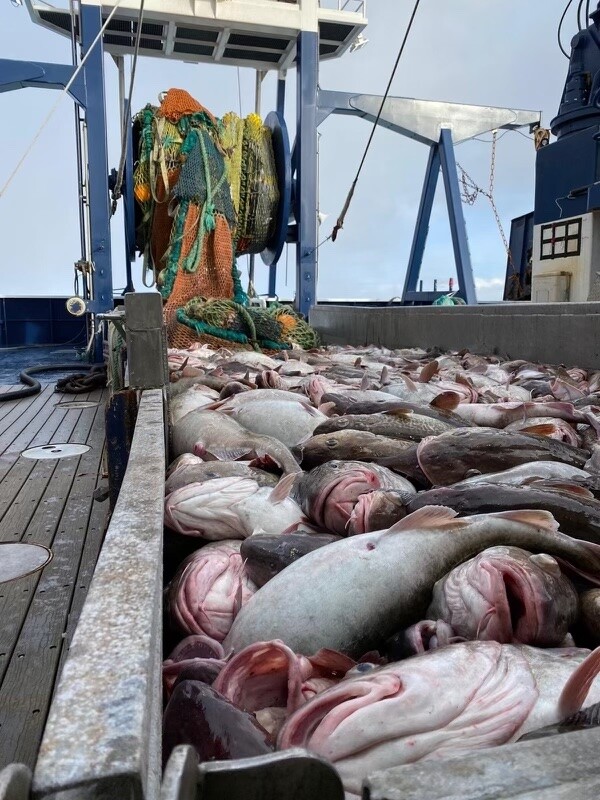Last month, the North Pacific Fishery Management Council recommended the establishment of a new Limited Access Privilege Program, or a catch-share plan, for the Bering Sea/Aleutian Islands Pacific Cod trawl catcher vessel fishery.
After more than two years of development undertaken in an open and transparent public process, the council voted unanimously to create a cooperative-style rationalization program for the trawl cod fishery that occurs in the Bering Sea and Aleutian Islands.
Because the Bering Sea cod fishery is a federal fishery, the council actions are guided by the Magnuson Stevens Act and must meet the 10 National Standards included in the act. The new management program was created using the best scientific, social, and economic information available and the thorough analysis of the impacts of this program were vetted in a 500+ page document discussed and reviewed at several council meetings. Based on the analysis, and the recommended choices of the various elements of the program, we know this program will positively benefit harvesters, processors, Alaskan communities (and the state of Alaska) and provide net benefits to the nation.
Participation in the cod fishery has soared in recent years, escalating a dangerous race for fish during the A-season, which begins on Jan. 20. A fishery that would last a few months in the past has been reduced to just days, with vessels racing to catch fish, often in treacherous weather.
Several injuries and near-death situations have occurred in the frigid waters of the Bering Sea during the winter A-season cod fishery. The cooperative program adopted by the council is directly responsive to National Standard 10, which requires management measures promote the safety of human life at sea. The program will eliminate the race by allowing co-op members to fish when it makes the most sense — so captains can stay tied to the dock in unsafe conditions, undoubtedly saving lives.
In addition to safety, improving management and eliminating the race for fish has several other benefits. More time to harvest the fish allows the harvesters and processors to work together on increasing the value of the fishery by increasing quality and allowing for value-added products, which in turn provide more revenue to the state of Alaska. Under a cooperative-based catch-share program, fishermen can take their time to decide where and when to set their nets and harvest their share of the cod fishery. They also will be able to cooperate with other fishermen, rather than compete with others, in the harvest of the entire cooperative’s cod quota.
One of the main tools afforded to the new harvester cooperatives under this catch-share program is the ability to manage incidental catch of other non-target species. The trawl catcher vessel co-op’s members can minimize incidental catch of halibut and crab under the cooperative plan. In addition, the plan requires 100 percent monitoring of fishing activity. Requiring 100 percent observer coverage for this fishery will allow for individual vessel accountability and provide the federal managers with the highest quality harvest information.
Over the last decade, the trawl cod catcher vessels had already reduced their interactions with halibut voluntarily by more than 68 percent — meaning fishermen left over 5.7 million pounds of halibut in the water, which could have been incidentally harvested along with cod.
The council took action to reduce the incidental take limit for halibut an additional 25 percent in the LAPP program, bringing the total regulatory reduction to 40 percent for this fleet, when combined with the 15 percent cut taken by the council in 2015, meeting the council’s goals to reduce halibut interactions significantly. This component is responsive to National Standard 9, which requires bycatch to be minimized to the extent practicable.
The council left out a gear-switching provision primarily because of the high crab bycatch in fixed-gear fisheries shown in the observer data and the analysis, which is responsive to the crab industry’s pleas to take bold action and reduce incidental take of crab, considering reduced stock statuses for Bristol Bay red king crab and opilio crab.
National Standards 4 and 8 are critically important for federal fisheries management. Discrimination between participants from different states is not allowed by law. The continued participation of fishing communities must be recognized and accounted for. This program recognizes participants from Newport, Ore., to Dutch Harbor, Alaska, and on to Kodiak.
The council chose to leave the cod C-season unrationalized to recognize the non-trawl participants who rely on cod rollovers to their fixed-gear fisheries later in the year.
The council focused attention on protecting shoreside processing infrastructure in rural Alaska communities and allocated a portion of the cooperative harvesting shares to seafood processors, ensuring a steady supply of cod across the docks in the places it has traditionally been delivered. The council took action to ensure an amount of cod would be available to be delivered into Adak in the years when a plant is operating in that community, requiring the intercooperative to ensure this harvest occurs.
Lastly, the council made sure to protect fishermen in unrationalized fisheries from negative impacts, and they included control and use caps to prevent excessive consolidation within the cod catcher vessel fishery.
Today’s trawl cod catcher vessel boat owners and the captains and crew are forward thinking, they are technologically savvy, they care deeply for our natural resources and minimizing incidental catch — they are thankful to the council for the opportunity to transition to a safer fishery that functions properly, meets the national standards, and provides value to the harvesters, processors, communities, and the nation where trawl-caught seafood is an integral part of delivering healthy protein to regular citizens and underserved communities alike. The council process worked exactly as it was intended — resulting in a responsible federal fisheries management action we can all be proud of.
The vessel owner members of Midwater Trawlers Cooperative and United Catcher Boats applaud the council for its leadership and action on this important program. We should celebrate responsible federal fisheries management and the public process that resulted in final action on a much-improved management system for the BSAI trawl catcher vessel cod fishery.

Heather Mann is the executive director of the Midwater Trawlers Cooperative. MTC vessels are heavily dependent on the BSAI cod fishery and are home-ported from Kodiak, Alaska to Newport, Oregon. MTC vessels are primarily small, multigenerational fishing-family-owned businesses that employ hundreds of people directly and hundreds more indirectly as they deliver millions of pounds of fish across Alaskan docks each year, supporting remote communities and those who depend on fisheries for their livelihoods.

Brent Paine is the executive director of United Catcher Boats. UCB member vessels are home-ported in Seattle, Dutch Harbor and Akutan, and have participated in the Bering Sea/Aleutian Islands catcher vessel trawl fisheries for over four decades.







